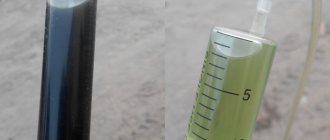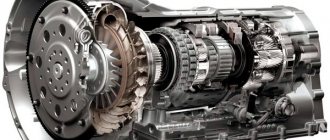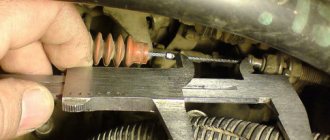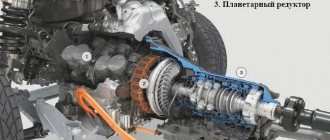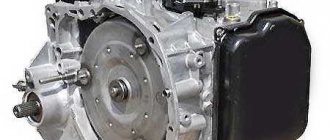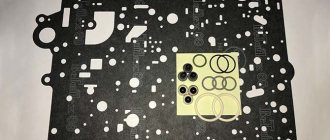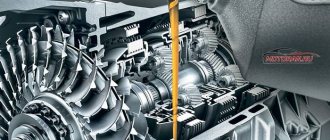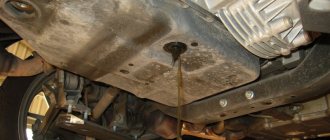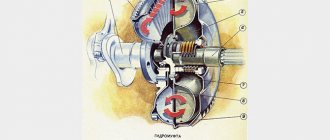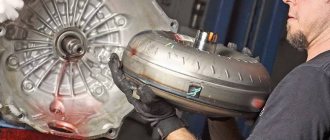Prices for major repairs of a variator
| Name of works | Cost in rubles |
| Tow truck | 0* |
| CVT diagnostics | 0* |
| Removing the variator | From 3000 |
| Variator defect | From 2500 |
| Disassembling the variator | From 3500 |
| CVT assembly | From 4000 |
| Flushing the cooling system | 0* |
| Installation of the variator | From 3500 |
| CVT adaptation | 0* |
| *Adaptation and tow truck are free of charge subject to major overhaul or repair of the hydraulic unit (mechatronics) | |
Modern CVTs
Nowadays, most cars from Japanese and German brands are equipped with continuously variable transmissions. Because their production is cheaper.
The world's leading manufacturers of automatic automatic transmissions, including CVTs, are ZF, Aisin, and Luk. These manufacturers create “automatic machines” for automakers from Japan, Europe and the USA. For example, the Ford concern uses ZF products, and Luk supplies components for Subaru CVTs.
Also, many global automakers have established CVT production at their factories. Their developments are patented and produced under their own names. Some of these CVTs do have unique features that affect the operation of the unit. The essence of others is not too different from what was previously invented.
The most famous CVT models:
- Japanese – X-tronic (Nissan), Lineartronic (Subaru), Multimatic (Honda), Multidrive (Toyota) – Japanese CVTs are less “capricious”, the undisputed leader among them is Multidrive (Toyota);
- German - Multitronic (Audi), Autotronic (Mercedes-Benz);
- American - Ecotronic (Ford) and Durashift CVT (Dodge).
In our country, the following car models with a CVT have become widespread: Honda HR-V and Civic, Nissan Primera, Audi models.
Features and differences of the X-tronic Nissan variator
The cars of the Nissan-Renault alliance are equipped with branded X-tronic CVTs produced by the Jatco subsidiary: on the Renault Captur, Nissan X-trail and Qashqai crossovers, etc.
Nissan's continuously variable transmission (CVT) is a type of V-belt CVT, but is a modified version of it. The reason for the modification was the desire of the automaker to deprive the CVT of its typical shortcomings.
Engineers made changes to the V-belt drive design (they made thinner pulleys and reduced the flexibility of the belt). The degree of reliability of the variator is increased by reducing the pressure between the belt and pulleys. Friction losses decreased by a third. As a result of the changes made, a lighter gearbox was obtained.
The main innovation is an additional planetary gear. Unlike conventional CVTs, the X-tronic gear ratio is higher – increased to 7.3/1.
X-tronic works in tandem with powerful engines; thanks to the adaptive electronic control system, the variator “adjusts” to any road conditions. Hence the recognition of experts: the X-tronic continuously variable transmission is a promising development that changes for the better the general idea of CVTs.
In turn, drivers in numerous positive reviews note: CVT from Nissan works quietly, the car with it accelerates smoothly and rapidly, thanks to the variator, the feeling of comfort does not leave during the entire drive.
But there are some drawbacks here: a car with an X-tronic variator slips in difficult road conditions (snow, mud). And in the event of a breakdown, the same difficulties with repair arise.
Lineartronic Subaru is one of the most reliable CVTs
Since 1984, Subaru began to use ECVT CVTs, forgotten since Volvo’s attempts, and significantly improved them. Subaru engineers equipped the CVT not with an elastic belt, but with one made of metal links. The mechanism also received a torque converter, sensors, and an electronic system. In this CVT, only the diameter of the drive pulley changed. The experts were amazed - the service life of this variator turned out to be many times longer. And the automatic mode demonstrated all the advantages of automatic transmission. At one “wonderful moment,” the concern decided to abandon the ECVT installed on the Justy model, and developed a CVT for Vivio, controlled exclusively by electronics. A little later, Subaru engineers tried to improve the performance of their first CVT; the new model was called iCVT and installed it on the Pleo car. An attempt to install iCVT on more powerful cars was unsuccessful.
In 2009, a new CVT model appeared called Lineartronic, based on the developments of the famous auto parts manufacturer - LuK. Today, Lineartronic CVTs from Subaru are installed on the brand’s models: Outback, Impreza, Legacy sedans, Exiga compact van, Forester crossover.
Cars with turbocharged engines are equipped with an upgraded version of the TR690, produced since 2009, and the rest are equipped with a new variator TR580 (New Lineartronic). CVT versions differ in design and size.
Subaru CVTs are considered the most reliable because they use a chain instead of a belt (a type of V-chain variator). The LuK company still supplies Subaru with a chain and guides for the Lineartronic variator. The chain is assembled from 900 plates and is flexible. With it it became possible to use pulleys of smaller diameter.
Due to the difference between the width of the pulleys, the CVT exhibits a record maximum gear ratio of 6.32. Also, a smaller bending radius made it possible to reduce internal stress and minimize the risk of deformation and friction of chain parts.
A smooth but confident start (even when going uphill) is ensured by the operation of the torque converter. It doubles the torque coming from the engine, and then (at 10 km/h) it is blocked (which eliminates unnecessary energy losses).
Despite its impressive potential, Lineartronic has compact dimensions: the entire CVT structure is significantly smaller than a belt drive.
The 4WD system is integrated into the variator housing. “Electronics” allows you to distribute torque between the axles, depending on road conditions; ensures vehicle stability and controllability.
The CVT electronic control unit is located outside the variator, is not subject to vibration or temperature changes, and therefore demonstrates high reliability.
In light of these features, the Lineartronic chain transmission turns out to be 5% more efficient than a standard V-belt gearbox. Saves up to 8% fuel (compared to an automatic transmission) - this is a serious achievement, considering that 1% savings in the automotive world is already a success. The operating life of Lineartronic is enough for 200-250 thousand km. The CVT can last longer if overhauled.
True, the Lineartronic variator is not intended for aggressive driving (components and parts wear out quickly due to sudden changes in driving modes). Towing on a cable with the engine not running is also not permissible. The service life and smooth operation of the Subaru CVT is affected by the quality of the fluid specially designed for the chain variator.
Features Multitronic Audi
The audio is produced by a variator with so-called virtual gears: each gear corresponds to a certain position of the conical wheels. During acceleration, the CVT maintains high revs. “Automatic” only works when the sport mode is turned on. The gear is selected by the driver.
This CVT has been produced since 2005 under the name Multitronic. Refers to the type of chain variators. Installed in premium class cars - A6, A8.
The design includes a strong chain - assembled from 1025 plates; links of different sizes are used to reduce noise levels. And also pulleys with hydraulic cylinders (the first presses the chain to the pulley, the second regulates the gear ratio). Compressing the pulleys avoids slipping when downshifting (or upshifting).
The Audio clutch device (in CVT) uses a multi-plate clutch instead of a hydraulic system, which makes it possible to combine smooth movement with quick start and acceleration.
Multitronic has a planetary gear (for reversing). The control system allows you to adjust the speed of reversing.
Previous Audi CVTs, produced since 1996, were “famous” for constant failures in the electronic control system. The chain was not very strong. But Multitronic is far from ideal. Audi engineers began to refuse to use it.
